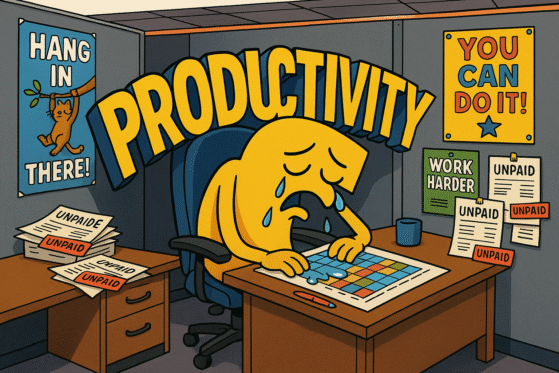Welcome to AI Leader Edge, where we provide factual assessments of AI tools to help you make informed decisions. Interested in exploring 3,500+ additional AI tools? Visit the AI Leader Edge Toolbox to discover, learn about, and implement unique AI solutions that can enhance your creative and business processes. Today, we’re exploring agentic AI workflows for YouTube automation, focusing on how these systems are impacting content creation at scale.
YouTube creators face an increasing challenge: the platform demands consistent, high-quality content while audiences expect fresh, engaging videos at regular intervals. Traditional content creation methods require hours of manual work across multiple phases, including ideation, scriptwriting, visual creation, voiceover recording, editing, and publishing. This multi-step process often creates bottlenecks, especially for creators trying to build or scale their channels.
The emergence of agentic AI systems offers a different approach. These systems go beyond simple AI tools by creating autonomous workflows that handle multiple production tasks with minimal human intervention. Instead of using separate AI tools for each step, agentic systems coordinate various functions to create complete videos from initial concept to final upload. Check out our previous article on the features of Katalist AI – the all-in-one comprehensive system for content creators.
What Makes Katalist’s Approach “Agentic”?
To understand what makes Katalist‘s system truly agentic, we need to distinguish between traditional AI tools and agent-based systems. Traditional AI tools handle single tasks well one generates scripts, another creates images, and a third produces voiceovers. An agentic system coordinates these functions autonomously, making decisions about how each component should work together based on the input and desired output.
Katalist‘s agentic architecture demonstrates several key characteristics. The system analyzes script content to automatically determine appropriate visual styles, character consistency, and scene composition. It maintains context across the entire production pipeline, ensuring that characters, settings, and narrative elements remain consistent from the initial storyboard through final video generation. Most importantly, it makes intelligent decisions about how different elements should interact without requiring constant human oversight.
The platform’s workflow operates through interconnected agents that communicate with each other. When you provide a script or story concept, the Script Assistant agent analyzes the content and passes relevant information to the Storyboard Generator agent. This agent creates visual representations while maintaining consistency guidelines that it shares with the Character Generator agent. The Voiceover agent accesses both script content and character information to generate appropriate audio, while the Video Editor agent combines all elements according to predetermined and learned preferences.
The Technical Foundation of Agentic YouTube Automation
The technical implementation of Katalist‘s agentic system reveals how modern AI achieves autonomous content creation. The platform uses advanced natural language processing to understand script context, extracting not just dialogue but also implied visual cues, emotional tone, and narrative structure. This understanding allows the system to generate appropriate visuals that match the intended mood and style of the content.
Computer vision models within the system ensure visual consistency across scenes. When the platform creates a character in the first scene, it maintains that character’s appearance throughout the video using advanced image generation techniques. This consistency extends to settings, props, and even lighting conditions, creating a cohesive visual narrative that would typically require significant manual oversight.
The voiceover generation system demonstrates sophisticated understanding of context. Rather than simply converting text to speech, it analyzes character roles, emotional content, and narrative pacing to select appropriate voices and delivery styles. The system can differentiate between narrator voice, character dialogue, and emotional emphasis, adjusting tone and timing accordingly.
Real-World Implementation of Agentic Workflows
Successful YouTube creators are implementing these agentic workflows across various content niches. In the educational content space, creators use Katalist to produce history lessons, scientific explanations, and how-to guides. The system generates accurate visual representations of historical events or scientific concepts while maintaining educational standards and engagement levels suitable for their target audiences.
Content creators in the motivational and philosophy niches leverage the platform’s storytelling capabilities to create compelling narratives. The system understands philosophical concepts and can generate appropriate metaphors, scenarios, and visual representations that enhance the message’s impact. This approach has proven particularly effective for channels focusing on personal development, stoicism, and life lessons.
Entertainment creators are using agentic workflows to produce narrative-driven content, including short stories, character-based adventures, and imaginative scenarios. The platform’s character consistency features allow creators to develop recurring characters across multiple videos, building audience connection and series continuity that would be challenging to maintain manually.
Key Advantages of Agentic YouTube Automation
The primary advantage of agentic systems lies in their ability to maintain quality while dramatically increasing production speed. Traditional content creation might require days or weeks to produce a single video, while agentic systems can generate complete videos in hours. This speed improvement doesn’t come from rushing through processes but from eliminating wait times between stages and reducing the manual coordination required between different production elements.
Consistency represents another significant advantage. Human creators often struggle to maintain visual and narrative consistency across multiple videos, especially when working on series content or building channel brands. Agentic systems excel at remembering previous decisions and applying consistent rules across all content, resulting in professional-looking videos that feel part of a cohesive brand.
Cost efficiency emerges as creators scale their operations. Traditional video production requires significant investment in software licenses, voice talent, graphic design services, and editing time. An agentic platform like Katalist consolidates these costs into a single subscription, potentially saving thousands of dollars per month for active creators.
The learning capabilities of agentic systems provide long-term value. As creators use the platform more, the system learns their preferences, style choices, and content patterns. This learning process means that outputs become increasingly aligned with the creator’s vision over time, reducing the need for manual adjustments and edits.
The Workflow in Practice: A Step-by-Step Breakdown
Understanding how creators actually use agentic workflows provides insight into their practical value. When starting a new video project, creators begin by inputting their core concept into Katalist‘s AI Script Assistant. This might be a simple phrase like “exploring ancient civilizations” or a more detailed outline of a specific topic they want to cover.
The Script Assistant analyzes this input and generates a complete script, including scene descriptions, dialogue, and narrative structure. It considers factors like target audience, video length preferences, and content style to create scripts that match the creator’s typical output while introducing fresh elements to keep content engaging.
Once the script is complete, the Storyboard Generator automatically creates visual representations of each scene. This process involves analyzing the script for visual cues, determining appropriate camera angles, and designing character appearances and poses. The system considers cinematic principles, ensuring that visual flow enhances the narrative rather than distracting from it.
Character creation follows, with the system generating consistent character appearances that match the script’s requirements. If the content involves multiple characters, the system ensures each has distinct visual characteristics while maintaining style consistency across the entire video. These characters persist throughout the production, appearing the same in every scene where they’re featured.
Voiceover generation adapts to the script’s requirements, selecting appropriate voices for different characters or roles. The system considers factors like character personality, age, and emotional context to generate realistic audio that enhances the storytelling. Creators can customize voice selection and adjust pacing, emphasis, and tone to match their preferences.
The final video generation combines all elements into a cohesive production. The system applies transitions, ensures timing alignment between visuals and audio, and adds any necessary effects or music. The result is a complete video ready for upload, requiring minimal manual editing or adjustment.
Controversial Perspectives: The Human Element in Automated Content
The rise of agentic YouTube automation raises important questions about the future of creative content. Critics worry that widespread adoption of these systems could lead to homogenization of content, where videos become formulaic and lack the personal touch that makes human creators unique. This concern has merit when many creators use similar AI systems, there’s a risk of content converging toward similar styles and approaches.
The speed and efficiency of agentic systems also raise questions about market saturation. If creating content becomes significantly easier and faster, the platform might experience an oversupply of videos, making it harder for individual creators to gain visibility and build audiences. This potential outcome could paradoxically make success more challenging despite the technical barriers being lower.
On the other hand, proponents argue that agentic systems democratize content creation, allowing people with great ideas but limited technical skills to produce professional-quality videos. These systems might enable a more diverse range of voices to participate in content creation, potentially leading to greater variety rather than less.
The key lies in how creators use these tools. Those who succeed will likely be those who use agentic systems as a foundation while adding their unique perspective, expertise, and creative vision. The technology handles the technical execution, freeing creators to focus on developing unique angles, building authentic connections with their audiences, and creating value through their distinctive insights and personalities.
Implementation Strategies for Creators
Creators considering agentic workflows should approach implementation strategically. Starting with content types that benefit most from automation such as educational videos with consistent formats or narrative content with recurring elements allows creators to learn the system while producing valuable content.
Understanding the platform’s strengths and limitations helps creators make informed decisions about when to rely on automation and when to add manual touches. While agentic systems excel at technical execution and consistency, human creativity remains vital for developing unique concepts, adding personal insights, and connecting authentically with audiences.
Successful implementation often involves a hybrid approach. Creators might use the system to handle time-consuming production tasks while focusing their efforts on ideation, audience research, and community engagement. This division of labor maximizes the benefits of automation while preserving the human elements that make content truly engaging.
Future Implications of Agentic Content Creation
The evolution of agentic systems suggests a fundamental shift in how we think about content creation. As these systems become more sophisticated, they may handle increasingly complex creative tasks, potentially reaching a point where human involvement focuses primarily on high-level creative direction and audience connection.
This evolution raises questions about skill development in the creative industries. Future creators might need different skills than today’s producers focusing more on conceptual thinking, audience psychology, and brand development rather than technical production skills. Educational institutions and training programs will need to adapt to prepare creators for this changing landscape.
The economic implications are significant. Lower barriers to content creation could lead to more competition but also to new monetization opportunities as creators can produce more content with the same resources. The key to success will likely be not just adoption of new tools but strategic thinking about how to use them to create genuine value for audiences.
Conclusion
Agentic AI workflows represent a significant advancement in content creation technology, offering YouTube creators unprecedented capabilities for producing professional-quality videos efficiently. Platforms like Katalist demonstrate how autonomous systems can handle complex production tasks while maintaining quality and consistency.
The key insight for creators is that these systems work best when viewed as powerful assistants rather than complete replacements for human creativity. The most successful implementations will combine the efficiency and consistency of agentic systems with the unique insights, perspectives, and authentic connections that only human creators can provide.
For creators looking to scale their YouTube presence or streamline their production process, agentic workflows offer compelling advantages. However, success will depend on thoughtful implementation that preserves what makes their content unique while leveraging automation to handle repetitive and time-consuming tasks.
As this technology continues to evolve, creators who understand and adapt to these new capabilities while maintaining their unique voice and value proposition will be best positioned to thrive in the evolving YouTube ecosystem.
Explore Additional AI Tools for Creators
Interested in exploring 3,500+ additional AI tools? Visit the AI Leader Edge Toolbox to discover, learn about, and implement unique AI solutions that can enhance your creative and business processes.
Need Expert AI Implementation Guidance?
If you require assistance evaluating these tools based on your specific business model or industry requirements, contact our team at info@aileaderedge.ai. We specialize in helping organizations make informed AI decisions based on potential impact rather than market hype.
Happy strategizing,
Stay Visionary, Lead with an Edge!
P.S. This article aims to inform AI Leader Edge readers about available options for AI adoption and implementation. Knowledge is power. We present AI not as a threat but as an evolution in the dynamic world of digital influence.








